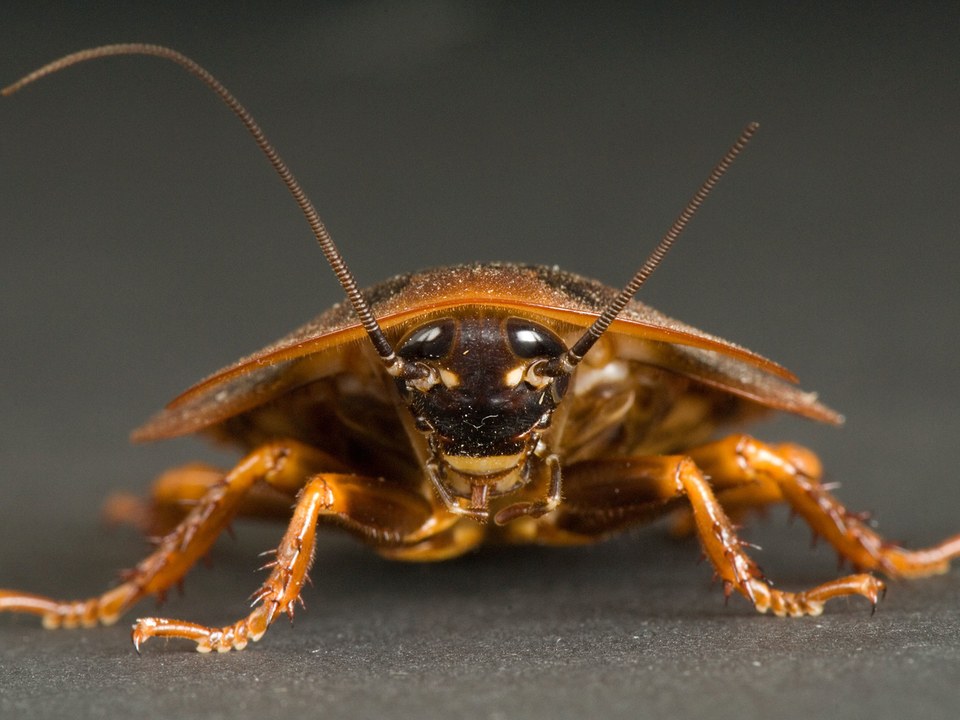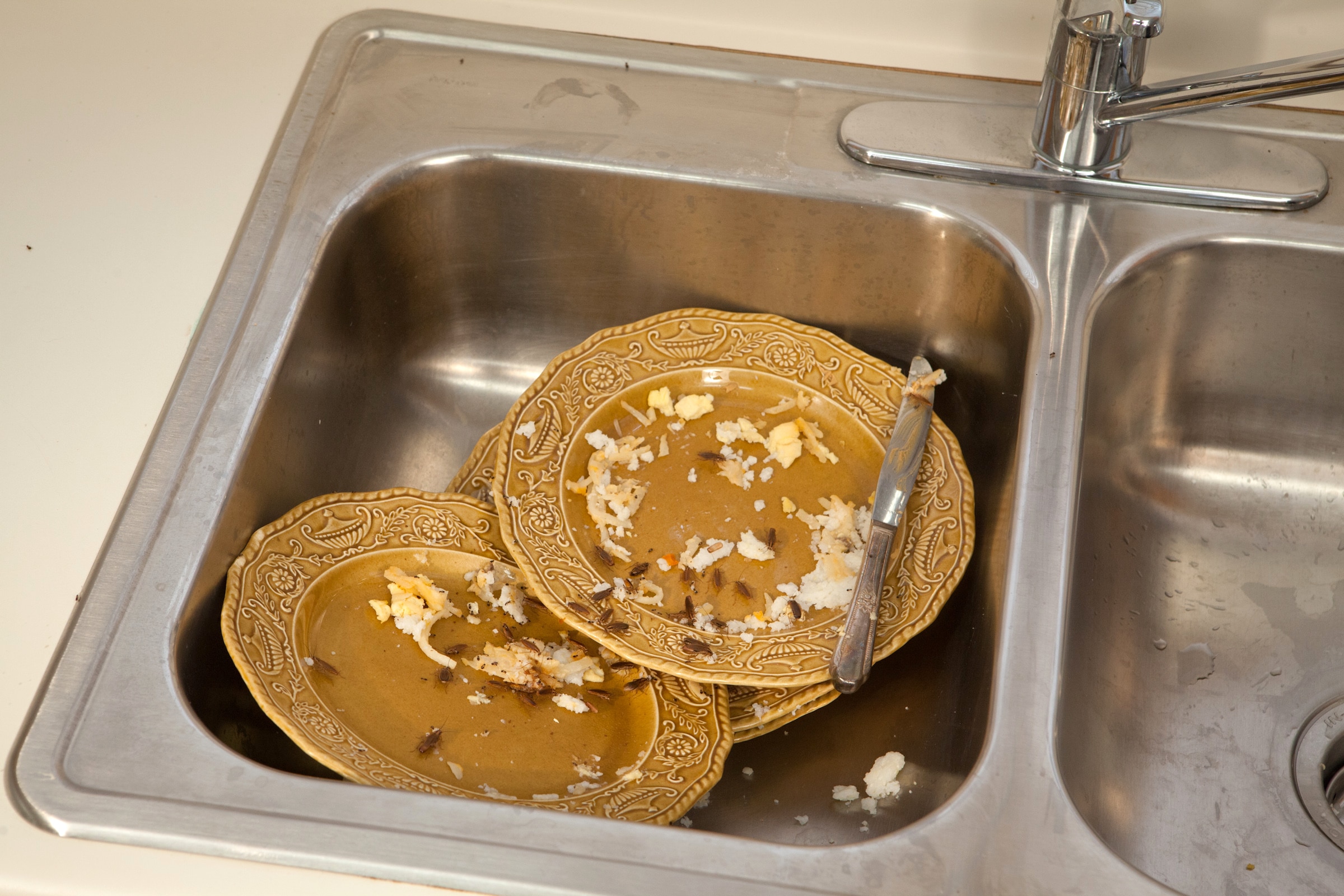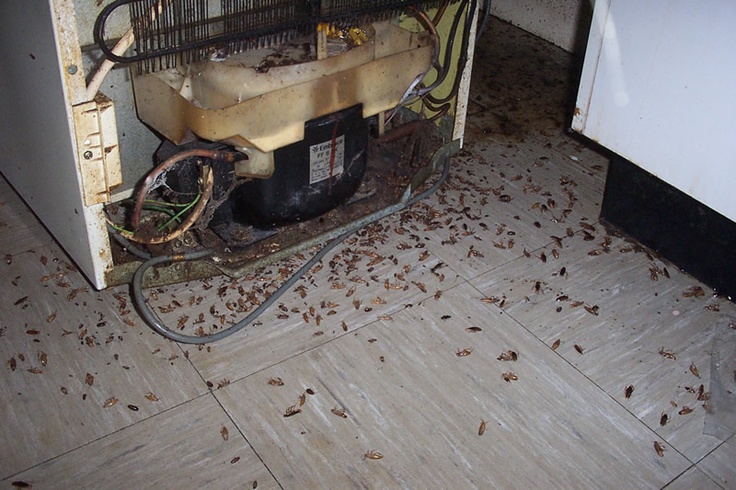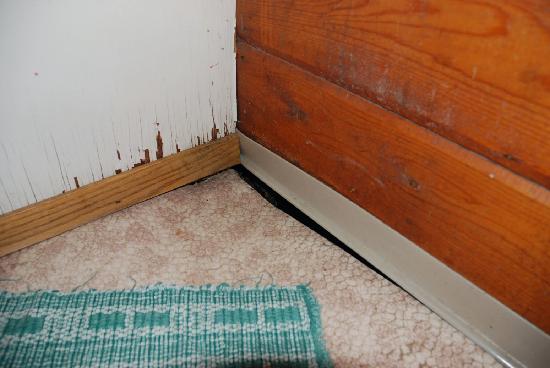Why Cockroaches Are Attracted To Your Home Even When It's Relatively Clean
Please don't fly.
Ugh, cockroaches. One of the vilest and most disgusting pests in the world, they have a habit of popping up in your home when you least expect it... and don't even get us started on the whole flying thing.
Cockroaches can also be pretty hard to get rid of for good, as these little buggers have an exceptional ability to adapt in any environment and survive off of any food source.
In fact, scientists believe that cockroaches are the oldest surviving insects in the world, having discovered an early ancestor of modern roaches that existed some 320 million years ago. This means they've been around since before dinosaurs existed.
While it's common knowledge that cockroaches are very much attracted to filthy conditions, most of us have probably encountered a cockroach or two (or more) in our own homes. Here's why:
Cockroaches only need the bare essentials to survive and thrive - food, water, and shelter. Unfortunately, our homes check all of those boxes. In addition, cockroaches are nocturnal and tend to hide in dark, tight spaces, so you probably won't even notice that they're living in your home.
A roach infestation does not bode well for the household, as cockroaches carry a disgusting combo of bacteria, viruses, fungi, and parasites in and on their little bodies. All these germs are spread around when they scuttle around your house, potentially triggering allergic reactions, as well as bacterial growth and diseases.
So, what should you look out for in order to avoid attracting cockroaches to your home? Here's a checklist:
1. Traces of food on the floor, walls, and other surfaces of your home (especially in the kitchen)
Crumbs on the floor, grease stains on the stove, and leaving unwashed dishes in the sink for too long are sure fire ways to bring roaches scuttling into your house.
SOLUTIONS: Keep your living spaces as tidy as possible, and clean up after yourself as you go. Clear the sink of dirty dishes as soon as you're done eating, wipe down all the counters and walls after cooking, mop and sweep the floor regularly to remove crumbs and debris that can attract cockroaches.
2. Uncovered food
Sugar as well as delicacies with sugar in them are roaches' favourites, such as cakes, soda, juice, and even fruits. Cockroaches also love food items that emit strong smells, such as meat products, cheese, greasy food, and even pet food.
SOLUTIONS: Don't leave food uncovered for a long period of time, such as dishes on the dinner table and open boxes of cereal in the cabinet. If possible, keep your perishables and foodstuff in an airtight container, preferably off of the floor. Don't leave pet food out all day or overnight as well.
3. Uncovered trash
The combination of food scraps and smelly garbage make the perfect food source for the roaches. In fact, cockroaches love the foul smell of garbage even more than strong-smelling foods.
SOLUTIONS: Make sure your rubbish bin is properly covered, and don't leave full garbage bags in the house for longer than necessary. Take it out before it starts to overflow and keep your rubbish bin area as clean as possible so roaches don't come running because they sensed pieces of trash scattered on the floor. Also, rinse out plastic containers or cans that have been used before throwing them out.
4. Wooden furniture and items made of wood such as books, cardboard boxes, and paper
Besides human-created food, cockroaches also consider other organic matter as a source of food. A primary example would be wood (especially if it's damp and/or rotting) as well as items derived from wood such as cardboard, paper, and paper bags.
In addition, piles of storage boxes and cluttered wooden shelves can also double up as living spaces for cockroaches because it's damp, dark, and pretty much hidden from predators (i.e. us).
SOLUTIONS: Get rid of cardboard boxes and old books as well as wooden furniture that you don't need anymore, especially if they are showing signs of decay.
FUN FACT: In the absence of food, cockroaches are also known to feast on starchy book bindings, soap, glue, toothpaste, leather, starch-based paints and wallpaper, dried human skin flakes, and nylon clothing. This is because cockroaches have a variety of bacteria and protozoa that allows them to digest non-food items.
5. A poorly-kept garden
An overgrowth of weeds and vegetation is the perfect place for nomadic cockroaches to make their home in, seeing as it's also an abundant source of food. Decaying plants such as dead trees, dying grass and compost heaps also attract cockroaches, as do dead insects and bugs as well as animal faeces. Told ya cockroaches eat everything.
SOLUTIONS: Keep your garden clean and tidy, and clear all festering vegetation or natural mulch around your doors, windows, and pathways.
6. Leaky pipes, stagnant puddles of water, wet bathmats or sponges, and any sources of moisture left out in the open
Cockroaches can only go one to two weeks without water, so they are often on the lookout for sources of water. Leaky pipes, faucets, and air-con units, especially if they're hidden away in dark cupboards or under the sink, attract cockroaches. They are also drawn to sources of standing water such as pets' water bowls, puddles of water around sinks or doorways, as well as wet sponges, bath mats, and towels.
SOLUTIONS: Repair any leaky appliances, wipe up the puddles, dry out or dispose of bowls of standing water, hang wet bathmats and towels out to dry after use, and keep kitchen sponges off the counter after wringing them dry of water.
7. Used items you've brought home from somewhere else, especially if the source shows signs of roach infestation
Cockroaches like living in heated, damp, dark, and private spaces. Aside from cardboard boxes, cockroaches have also been known to make their home in appliances and electronics such as refrigerators, microwaves, toasters, computers, gaming consoles, fax machines, and printers.
SOLUTION: If you absolutely have to bring these things home, quarantine them in a sealed plastic bag with pest strips for a week.
8. Tiny cracks and gaps within your house, such as spaces between counters and cracks in the wall
Cockroaches love dark and tight spaces. They have been known to hide in pieces of molding, in cabinets, under appliances, INSIDE appliances, and between the pipes, amongst many other possibilities. These tiny gaps are also their way into your house - these tiny vermin can actually squeeze through spaces that are smaller than their body size!
SOLUTIONS: Clean the dark, tight areas that they can hide in regularly. Check for cracks and gaps around the house, then seal them with caulk to block off the roaches' access points.








